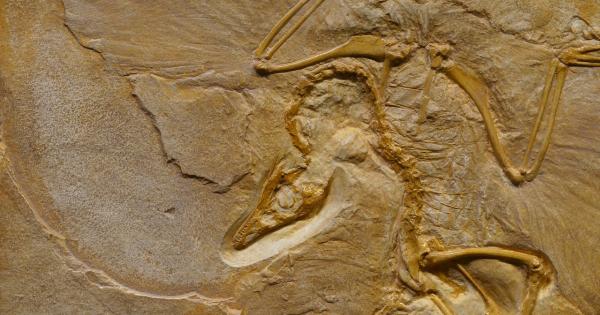Sex is an integral part of human existence; it is the biological act of procreation that aids in the survival of our species. However, it also has a darker side; it can be a tool of predation.
In this article, we will explore the biology of sexual predation and delve deeper into why it occurs. We’ll also examine the various forms of predation, and the mechanisms that enable it to happen.
What is sexual predation?
Sexual predation is a term used to describe any form of sexual behavior that is harmful, manipulative, or non-consensual. The concept of predation is often associated with animals hunting for prey, but it can also occur in human society.
In its simplest form, sexual predation involves one person using their power, status, or authority to exploit another person for sexual gratification. This can take many different forms, including rape, sexual assault, harassment, and child grooming.
Sexual predators often target vulnerable individuals, such as children, the elderly, or those with mental or physical disabilities.
The biology of sexual predation
There are many different biological mechanisms that facilitate sexual predation. One of the most significant is the role of hormones in regulating sexual behavior.
Testosterone, for example, is a hormone that has been shown to increase aggression and sexual desire in males. It is thought that high levels of testosterone may contribute to sexual predation in some cases.
Another biological factor that may play a role in sexual predation is brain structure. Studies have shown that certain regions of the brain are more active in sexual predators than in non-predators.
These regions are responsible for things like impulse control, decision-making, and emotion regulation. It is thought that abnormalities in these regions may contribute to predatory behavior.
Forms of sexual predation
Sexual predation takes many different forms, and can occur in a variety of settings. Some of the most common forms of sexual predation include:.
Rape
Rape is a form of sexual assault that involves non-consensual sexual intercourse. It is one of the most extreme forms of sexual predation and can have lasting physical and psychological effects on the victim.
Sexual assault
Sexual assault refers to any form of unwanted sexual contact, including groping, fondling, or penetration. It can be a traumatic experience for the victim, and may result in physical injury or emotional trauma.
Harassment
Sexual harassment is a form of predation that involves unwanted sexual advances, comments, or gestures.
It can be a pervasive and persistent problem in many workplaces and social settings, and can have a detrimental effect on the victim’s well-being.
Grooming
Child grooming involves intentionally building a relationship with a child for the purpose of sexual abuse. Groomers may use a variety of tactics, such as buying gifts, offering compliments, or giving special attention.
This can lead to a dangerous situation for the child, as the groomer gains their trust and manipulates their behavior and emotions.
Why does sexual predation occur?
The causes of sexual predation are complex and multifaceted. It is not a behavior that can be reduced to a single cause or factor. However, there are several theories about why sexual predation occurs.
Power and control
Sexual predators often use sex as a tool to gain power and control over their victims. This can be a way for them to assert dominance over another person and alleviate feelings of insecurity or inferiority.
Psychological disorders
Some individuals who engage in sexual predation may have underlying psychological disorders, such as antisocial personality disorder or pedophilia.
These disorders can lead to a lack of empathy and an inability to understand the consequences of their actions.
Cultural and social factors
Cultural and social factors can also contribute to the prevalence of sexual predation. For example, a culture that glorifies sexual conquests or objectifies women may normalize predatory behavior and lead some individuals to engage in it.
The negative impact of sexual predation
The impact of sexual predation can be severe and long-lasting. Victims may experience physical injury, psychological trauma, and even death.
Sexual predation can also have a wider impact on society, including increased rates of sexually transmitted infections, unwanted pregnancies, and decreased trust in social institutions.
Prevention and intervention
Preventing and intervening in sexual predation requires a multi-faceted approach that addresses both individual and societal factors. Some of the most effective prevention strategies include:.
Education and awareness
Educating individuals about the different forms of sexual predation and how to identify them can help reduce the incidence of predation. This can be done through public awareness campaigns, community education programs, and workplace training.
Regulation and enforcement
Regulations and legal enforcement can also be effective in preventing sexual predation. Laws that criminalize sexual assault and rape can help deter individuals from engaging in these behaviors, and provide recourse to the victims.
Support for victims
Providing support and resources for victims of sexual predation can help them cope with the trauma and move on with their lives. This can include counseling services, legal advocacy, and medical care.
Conclusion
Sexual predation is a complex and multifaceted problem that requires a comprehensive approach to address.
By understanding the biology of predation, the various forms it can take, and the underlying causes, we can begin to develop effective prevention and intervention strategies that reduce the incidence of sexual predation and create a safer, healthier society for everyone.




























